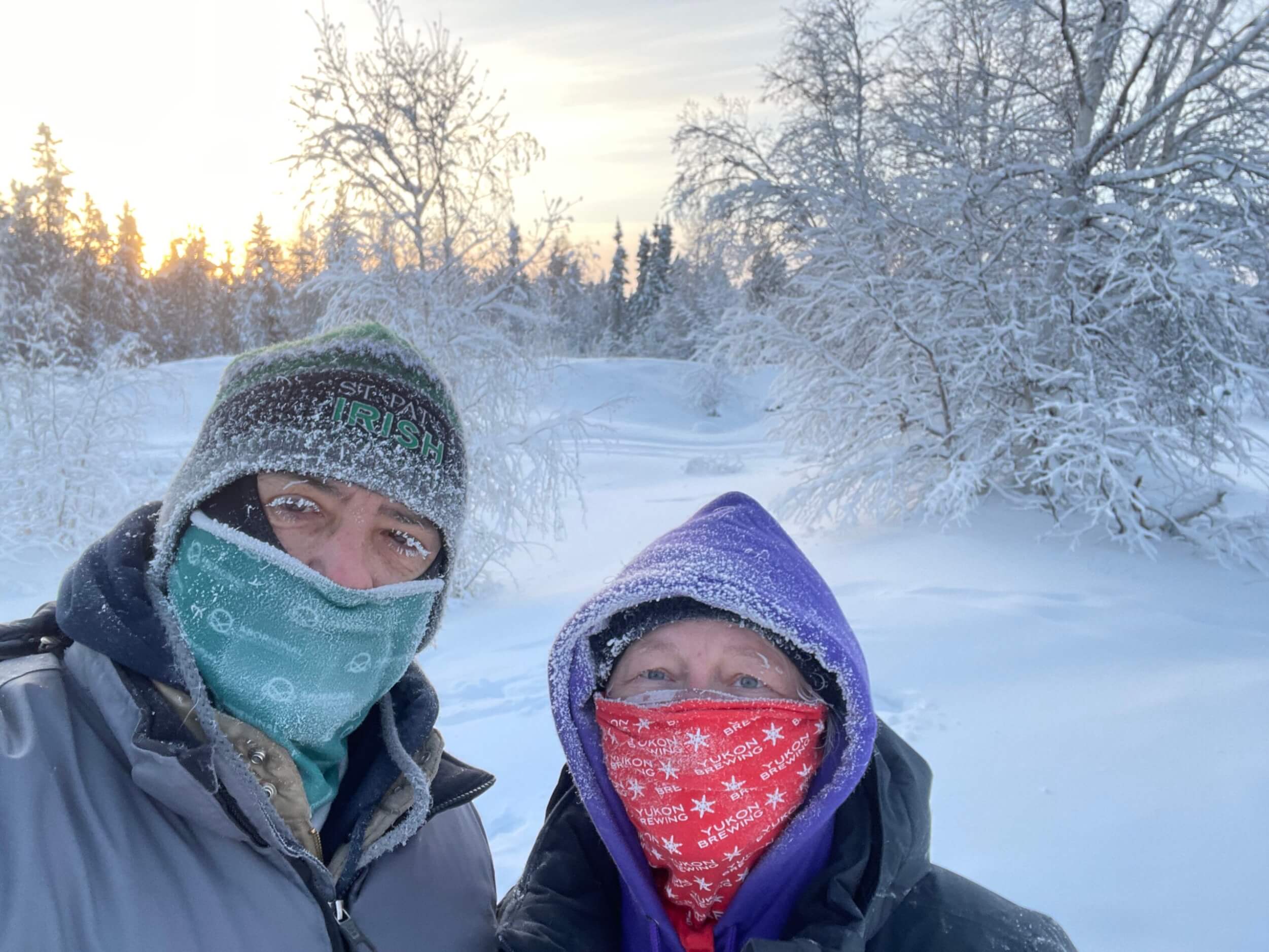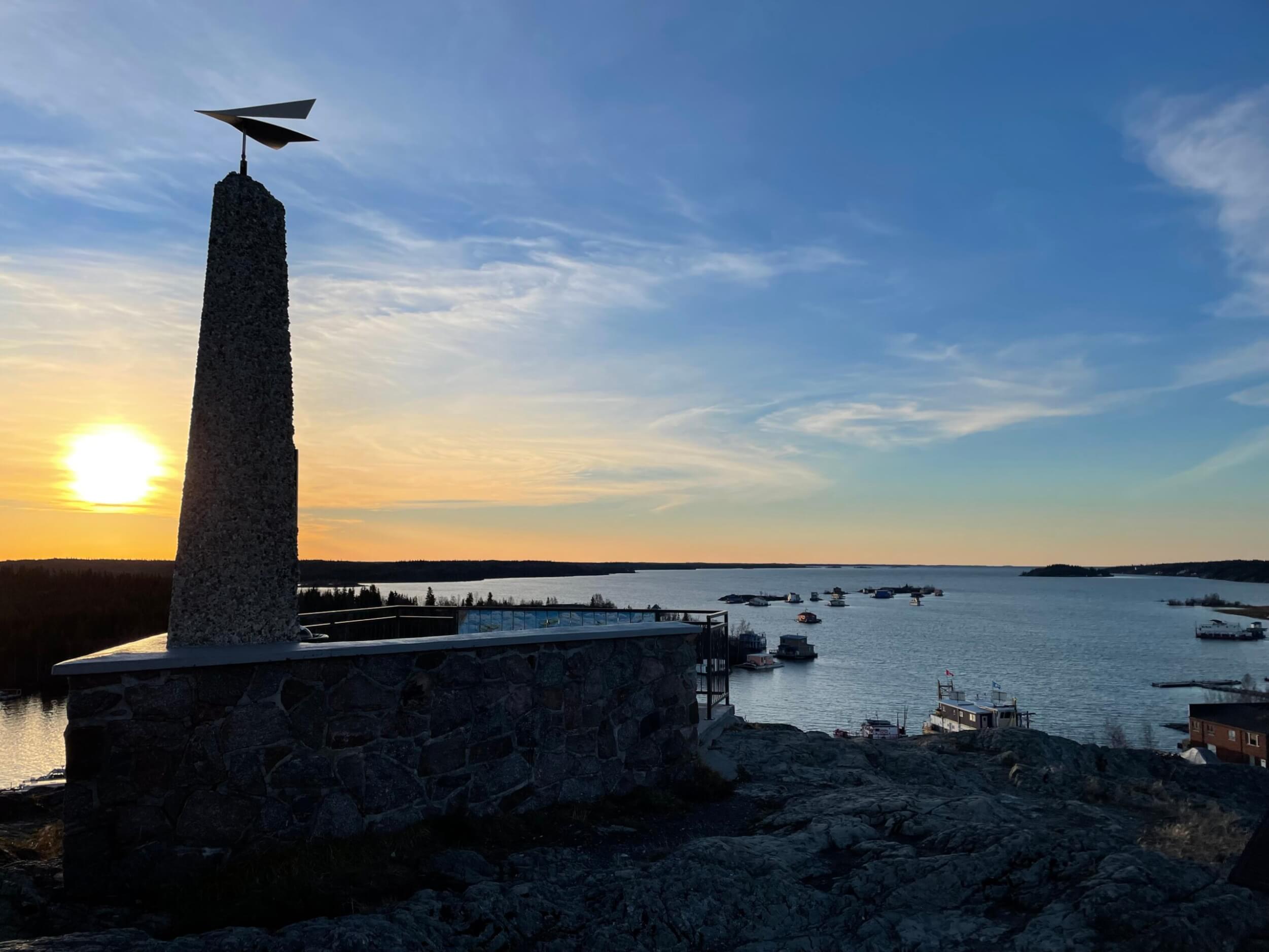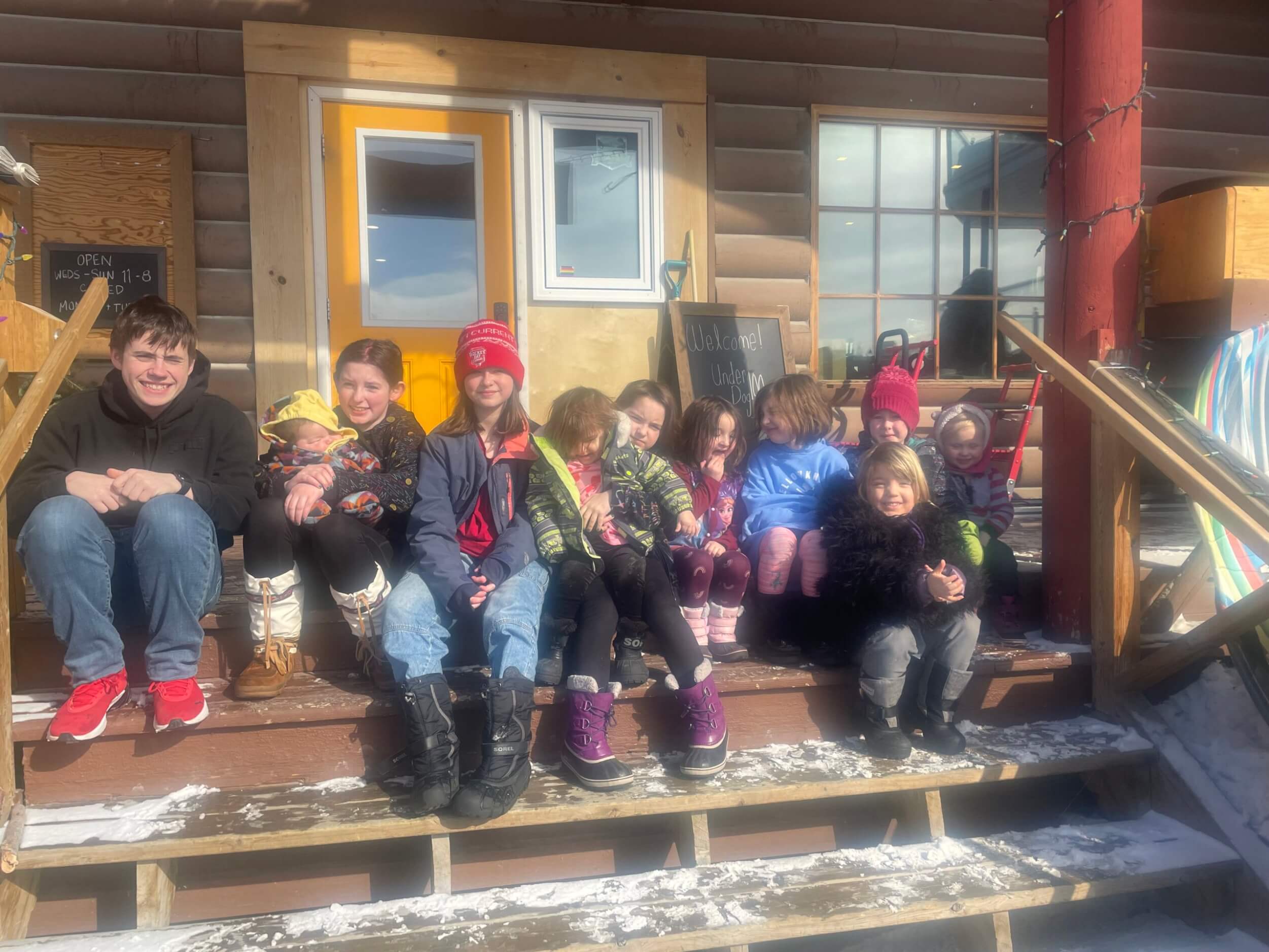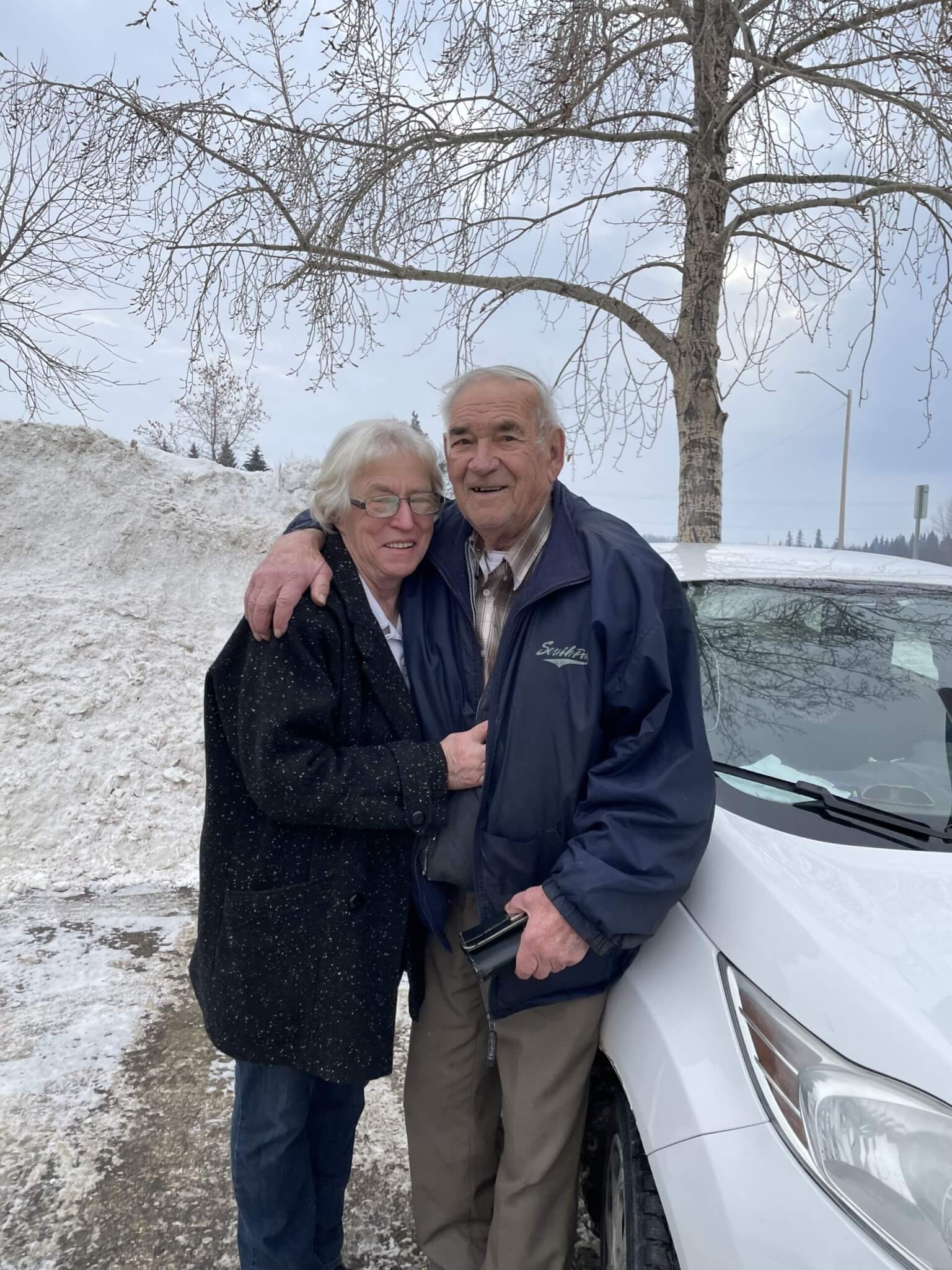Athabasca University grad delivers remote learning in the North in line with the world's natural rhythms
A young girl is in an oat field near Edson, Alta., with her dad. They're checking to see if the oats are ready to cut, and she asks how he knows it's time.
"I remember him taking the husk off one of the oats," Dr. Tammy Soanes-White said. "He said when you squeeze it, you can take the husk off the outside. It's dry, but when you bite the inside, it's creamy. And it was."
Growing up in rural Alberta, life was not always measured by the clock or by the calendar—you couldn't just say, 'We'll get the crop in on August 10 at 9 a.m.' Instead, it was based on the conditions. Was it hot enough? Is the grain mature enough? Were the machines all ready to go?
"It was about using all those senses to know and to adapt to environmental conditions," she said. "That basically feeds how I think now—those early memories."
Soanes-White (Doctor of Education in Distance Education '24, Master of Education in Open,Digital, and Distance Education '12, Bachelor of Commerce '94) has come a long way from the farm where she first started learning about the natural rhythms of the world around us, but she has carried these lessons with her to this day in Yellowknife, N.W.T.

Flexible education for a flexible educator
Prescriptive requirements of when and where to do things don't work for everyone. Soanes-White learned this through her own extensive educational experience, and also in her role as an educator with Aurora College in Yellowknife, serving students in Canada's North.
Working with students as an instructor in the college's School of Business and Leadership, she provides the same kind of flexibility from which she has benefited, now having completed her third degree from Athabasca University (AU).
This might include extensions for students who need it, offering exam rewrites or oral exams, providing flexibility during the recent evacuation due to wildfire, or letting students present in their own languages. It could also be as simple as understanding that students sometimes need to go out on the land to engage in Traditional Indigenous cultural practices, and giving them the time to do that.
"I appreciate and I acknowledge that we're not always on the clock and sometimes it's important to bend into the cadence of how things are," she said. "That's when real growth happens."
I wanted to be attentive, but because of my reflective nature and my need to experience things, I had trouble sitting at my desk.
Dr. Tammy Soanes-White, on her experience in a traditional classroom
Meeting students where they are
Soanes-White chose AU for her first university degree for the same reason as many others—she needed the flexibility to set her own schedule so she could care for her kids and work. Besides which, she had never thrived in a typical classroom: "I wanted to be attentive, but because of my reflective nature and my need to experience things, I had trouble sitting at my desk."
She and her family moved north in the late 1990s, and it didn't take long before she found herself in a role where she could provide flexible education to others—meeting students exactly where they are and helping them get exactly where they want to go.
As the manager of training and development with the department of Municipal and Community Affairs for the Government of Northwest Territories, she was instrumental in developing a training program to support learners across the territory. This included building a computer lab in the back of a three-quarter-ton truck, which she drove thousands of kilometres on northern highways—literally meeting students where they were.
What's more, the program helped students get exactly where they wanted to go. Some wanted to work in the High Arctic, others wanted to work further south, and many wanted to be able to ladder their education into other programs or certifications. Soanes-White knew the importance of supporting students in achieving the outcomes they wanted.
"They don't have to leave their community," she said. "They can stay home, they can work, and they can raise their children in the culture they want to raise their children in."

A focus on remote learning
As her career advanced, Soanes-White wanted to advance her education as well. She first completed the Graduate Certificate in Instructional Design, and continued with her studies to earn a Master of Education in Distance Education from AU as well.
Almost immediately after that, she enrolled in an executive MBA program at the University of Alberta (U of A), which had her commuting between Yellowknife and Edmonton on weekends to complete her studies. Having always wanted to get a doctoral degree, she stuck with the U of A to pursue a PhD in educational leadership and administration with the goal of studying student success in remote post-secondary distance education.
"People kept kind of pulling me back into a very formal, traditional philosophical view of education and I it didn't line up for me," she said, which is why she ultimately chose instead to complete a doctoral degree at AU.
Landing back there was like coming home again.
Dr. Tammy Soanes-White, on returning to Athabasca University for a doctoral degree
'Coming home' to Athabasca University
Soanes-White wrote her thesis on the exact topic she had initially planned in an environment tailored to distance education. Through interviews with students and theoretical modelling, her goal was to better understand why students do or do not succeed in remote distance learning.
"It's right where I should have been initially. Everything I was talking about resonated with the people I was speaking with. My dissertation was guided and supported by people who understand the meaning behind remote learning and distance education," she said. "Landing back there was like coming home again."
In addition to publishing research to support international efforts to promote distance education—working with colleagues all around the world who are dealing with some of the same infrastructure constraints facing educators in Canada's North like lack of broadband access—she is applying what she has learned to better support students in her current role as an instructor at Aurora College.

Learning and teaching in the natural rhythms
A young girl is in her grandma's back yard in Yellowknife, N.W.T., looking at a plant full of cherry tomatoes that are starting to turn red. She asks her grandma how you know when the tomatoes will be ready to eat.
"I said to her when we touched them, if it falls into our hand, it means it's time to eat it, just like an apple tree or raspberry bush," Soanes-White said, putting her hand to the underside of the tomato. "It's not ready. We'll try tomorrow."
The lessons she learned as a young girl from her dad in the oat fields, or from her own grandma who warned her that eating too many fresh peas would give her a stomach ache, no matter how delicious they are, still stick with her. She has continued to share those lessons—not just with her own children and grandchildren, but also the countless others whose lives she has helped transform through education.
"I hope I'm doing my mom, my dad, and my baba justice. They really worked hard to make sure that every day was a day for learning," she said. "I hope that I'm doing that here."
